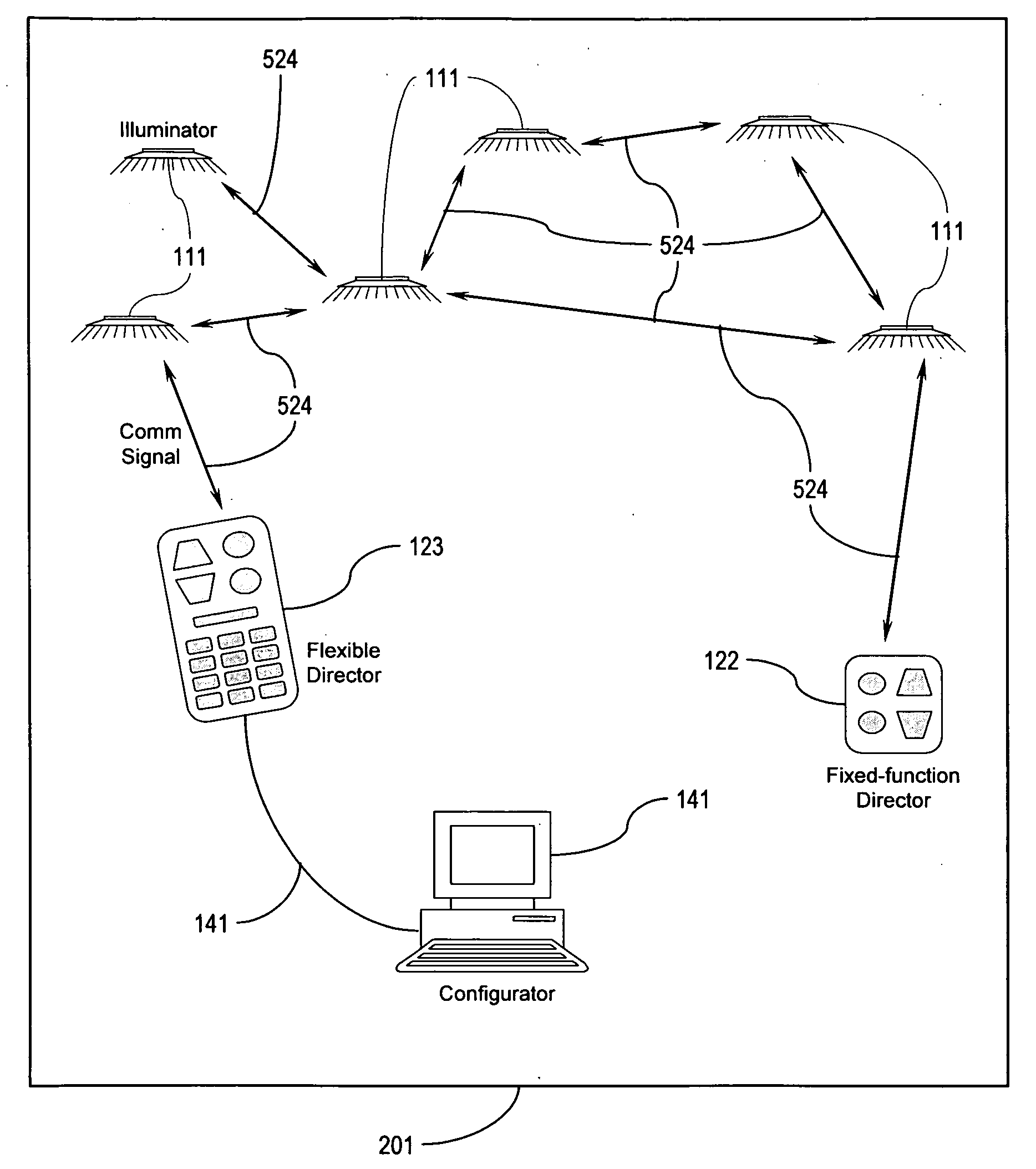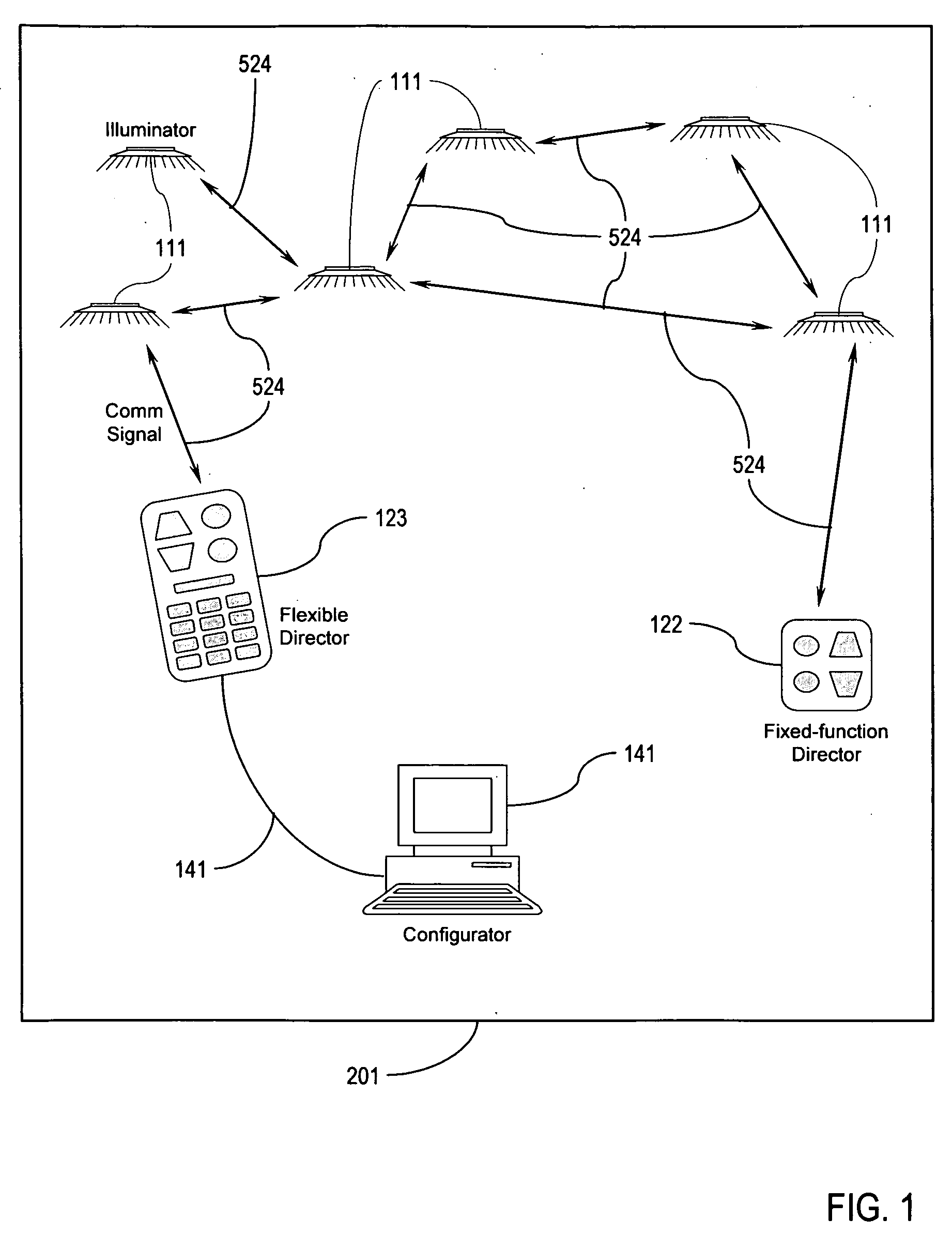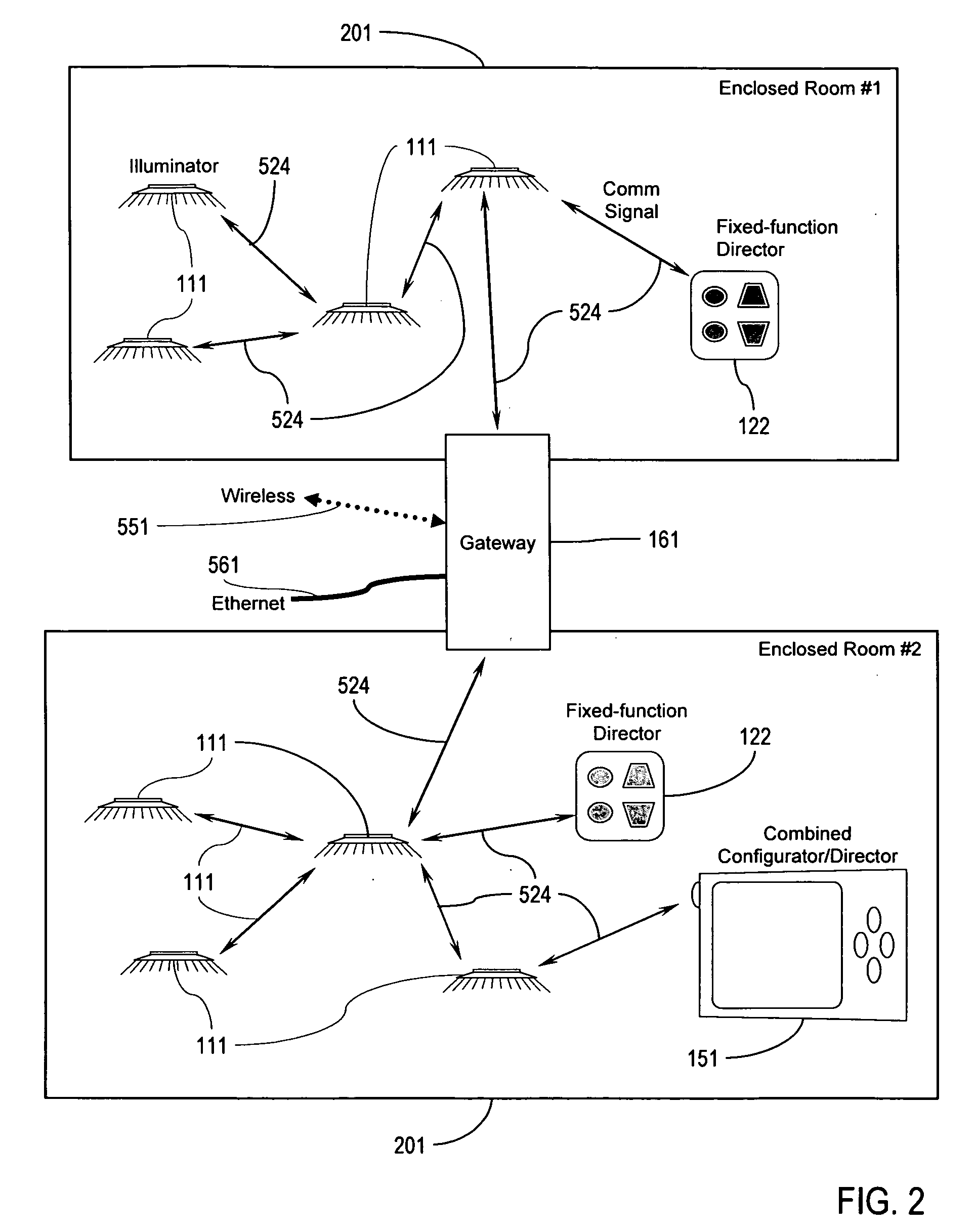Illumination control network
a technology of control network and control network, applied in the direction of instruments, light sources, electrical equipment, etc., can solve the problems of not providing the degree of flexibility and ease of us
- Summary
- Abstract
- Description
- Claims
- Application Information
AI Technical Summary
Benefits of technology
Problems solved by technology
Method used
Image
Examples
Embodiment Construction
1 Introduction
[0033]A description of example embodiments of the invention follows.
[0034]The teachings of all patents, published applications and references cited herein are incorporated by reference in their entirety.
[0035]Traditional lighting sources (such as incandescent bulbs, fluorescent lamps, metal halide lamps, etc.) can be turned on and off, but provide very little additional flexibility of control. For example, incandescent lamps can be dimmed, but only at the cost of dramatic diminution in energy efficiency and an undesirable color shift to the red end of the spectrum. Similarly, fluorescent lamps can be dimmed, but only within a limited range and through use of sophisticated high-voltage power control circuitry that is incompatible with the dimmers used for incandescent lamps. Metal halide lamps are even less practical to dim, and although highly efficient, have relatively very long startup and cool-down times. The above-cited drawbacks represent only a few of the disadva...
PUM
 Login to View More
Login to View More Abstract
Description
Claims
Application Information
 Login to View More
Login to View More - R&D
- Intellectual Property
- Life Sciences
- Materials
- Tech Scout
- Unparalleled Data Quality
- Higher Quality Content
- 60% Fewer Hallucinations
Browse by: Latest US Patents, China's latest patents, Technical Efficacy Thesaurus, Application Domain, Technology Topic, Popular Technical Reports.
© 2025 PatSnap. All rights reserved.Legal|Privacy policy|Modern Slavery Act Transparency Statement|Sitemap|About US| Contact US: help@patsnap.com



